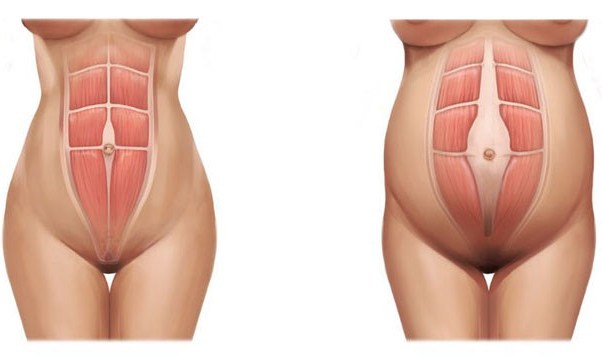Post-natal Pilates and diastasis recti
A bit of background on me
The reason I became so passionate about Pilates is down to how it made me feel after I had my children. I love my children, don't get me wrong, but pregnancy didn't really love me, and I had a lot of pain throughout my pregnancies and was left feeling a bit of a mess once I'd had them.
I suffer from diastasis recti (I'll talk about this a little more a little later) and also chronic hip pains I put down to instabilities caused by my Symphysis pubis dysfunction (SPD) had through my pregnancies. I'll talk more in another post about the SPD, but I want to keep this post as focussed as possible, and I have a tendency to ramble!
Not fully understanding what the diastasis recti meant for me I went in to full-on exercises: crunches, planks, push-ups, you name it, I thought I would get rid of my 'mummy tummy' in no time! I even contacted personal trainers in St Neots who I got to try and push me harder. Needless to say, I made my issues worse (even having to have scans for possible herniations)!
Finding a great Pilates instructor to talk me through what to do and how to do it correctly was the best thing I did for my health, I'll explain why now.
What is diastasis recti?
When you're pregnant, separation of the rectus abdominus muscles and connective tissues in-between them occurs. This is normal and really expected as the baby grows, so there's enough room to keep you and baby comfortable (well, as comfortable as possible!). It can take several months for these muscles to begin to heal and move closer together after giving birth. For some individuals, the separation can remain significant after this stage; a condition called diastasis recti.
This can lead to a weak core, back pain, and a stubborn 'mummy tummy'.


How do I know if I have it?
In your 6 week post-natal check-up you should be being checked for diastasis recti by your doctor - if you don't - ask! I can't stress this enough...You need to know this information for yourself before you decide to exercise.
You can easily check yourself (or a friend) for diastasis recti, in the following way, but it's worth also asking your instructor to help you with this. If they're knowledgeable about post-natal, they'll be able to do this, if they're not, then seriously consider going elsewhere if you're newly post-natal, worried about the diastasis or still breast-feeding.
Lie on your back with your knees pointing toward the ceiling
Lift your head and shoulders slightly off of the floor (like doing a mini crunch)
Push your fingers down into your tummy button: If your fingers sink into your abdomen, you have a separation of your rectus abdominis muscles
You can then move your fingers a few cm above and below your tummy button to feel the different degrees of separation in different areas
Becoming familiar with your degree of separation is helpful when beginning exercises in order to track your progress. Whilst some aren't possible to heal completely, doing the right movements in the right manner can help the appearance of the dreaded 'mummy-tummy'.
So, why is Pilates good for this?
Many of the methods and techniques we utilise in Pilates naturally work to improve diastasis recti. We target your core muscle groups throughout practice that are all impacted by having the condition. Teaching you to hold your body in the right way, your breathing throughout exercises in a controlled way, and to hold in your core to support and help your body as you move will all help target the appearance, and potentially the condition itself, extremely effectively.
The exercises themselves focus on the right movements rather than those that are counter-intuitive. Yes, we have planks, but for those who have this condition, we wouldn't do them until the foundations were well and truly in place. Until then, there's a wealth of exercises we teach to build those foundations.
Having a Pilates (or other fitness) professional that understands the condition is really vital. You may even be fine at your 6 week check, but unless your strength is built up correctly post-birth, you could create issues for yourself. I mentioned breast-feeding above too, as your body is still producing the hormone relaxin throughout the breast-feeding stage, which means that all our connective tissues can be affected throughout this period. So, even if you've had your little one 6 months, 8 months or potentially a year or more ago, it's important to be mindful that doing the wrong exercises without the knowledge of how to build that foundation first can cause you issues down the line.
Pilates exercises that are great for building our core foundations
Abdominal hollowing
Pelvic tilts
Core stabilisation
If you're looking for Pilates in or near Mount Martha, Mornington, Mount Eliza or nearby on the Mornington Peninsula, VIC, then don't hesitate to get in touch with me - and we can specifically tackle this issue - I'll be more than happy to have a chat, discuss options and come up with a tailored plan to suit your needs and get you on the path to recovery.

